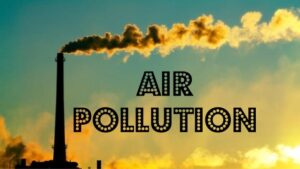Best of Both Sides: The public and legislators must both recognize the financial advantages of reducing pollution. Experts can advise us on what to do when it comes to air quality, but society must come to an agreement on why action is necessary. Wintertime brings attention to air pollution every year.
However, it is clear that the issue persists throughout the year. Seasons and sectors see a shift in duties as a result of intermittent attention from both authorities and citizens. We must take immediate action when the quality of the air deteriorates.
However, a patient’s discharge from the ICU does not grant them permission to leave the hospital.
First, moving away from individual blame and toward group accountability. When the Covid epidemic struck, organizations and businesses alike had to coordinate their actions and adhere to set protocols.
The size and cooperation required for air cleaning are similar. At the level of governance, India need a constitutionally empowered nodal authority to guarantee coordinated, proactive measures against air pollution that have deadlines for all parties involved.
To guarantee accountability and coordination between levels of government, this is the absolute minimum.
According to estimates from Dalberg Advisors and the Confederation of Indian Industry, air pollution costs Indian companies $95 billion annually, or 3% of India’s GDP.
This is a catastrophe affecting the entire economy rather than simply a single company, and it calls for cooperation. Industry-wide regulatory reforms and improved oversight are necessary.
More stringent guidelines can be established by SEBI’s Business Responsibility and Sustainability Report (BRSR) framework to guarantee consistency in the reporting of pollutant emissions, the declaration of air pollution mitigation targets (as corporations do for carbon emissions), and the reporting of disaggregated emissions data.
This will guarantee that the mitigation strategies are aimed directly at the pollutant source.
Second, from corrective actions to expense avoidance. India has a heavy cost from pollution in terms of GDP, productivity, and public health.
The World Bank estimates that the annual cost of health harm caused by air pollution is $8.1 trillion worldwide. Reactionary actions are required when the air quality deteriorates to a “severe” level, although they won’t cover the entire expense.
Third, by elevating sectoral objectives, from abatement costs to investment opportunities. Is it possible to approach investment in clean air similarly to how we approach the shift to clean energy?
It is important to prioritize renewable energy sources that benefit companies, laborers, and consumers in addition to cutting back on fossil fuels. India is currently the fourth-largest renewable energy market thanks to its push for a clean energy transformation.
In a similar vein, the nation has set high goals for electric vehicles and has established an ambitious National Green Hydrogen Mission to green transportation. In India, there are already investment opportunities worth at least $500 billion in clean power, lower-carbon industry, and electric transportation this decade alone.
Another way to take advantage of these opportunities and move away from assigning blame and toward initiatives that attract capital and stimulate economic expansion is to take action on clean air.


































